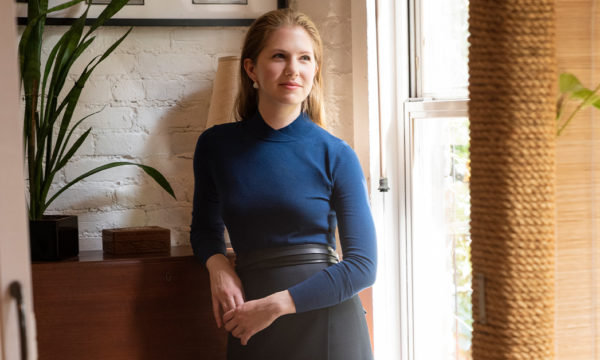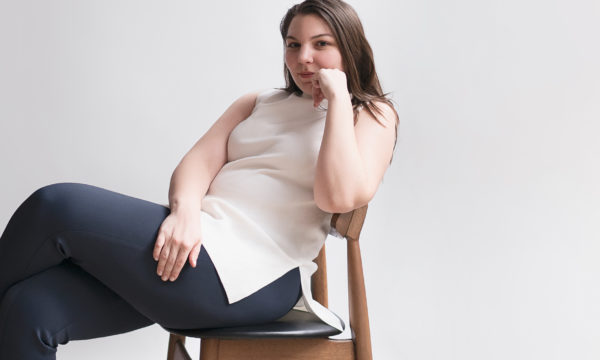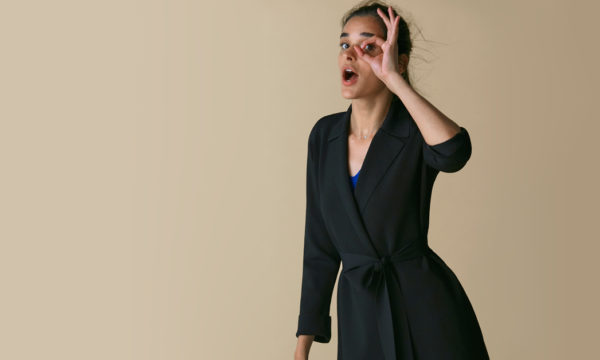How to Dress for the Dreaded Winter Commute
November 27, 2019 | Filed in: Your Closet
Every fall without fail, there arrives a tipping point when excitement about cozy sweaters and cute boots slides into exasperation over dressing for slush and snow. This is particularly true for anyone who relies on public transit and knows that getting to work means navigating a series of wildly divergent microclimates. The journey goes something like this: Bundle up for icy sidewalks and frosty winds, cram into a sauna-like subway car, walk back out into the winter weather (by now, swampy inside your puffer coat), and take the stuffy elevator up to an office that may be freezing, tropical, or temp-controlled, depending on the day. Oh, and try not to look like a sweaty, frazzled mess in your morning meeting.
Want more M.M.? Sign up for our newsletter.
Sound familiar? If you answered “yes,” please accept our solidarity and deep sympathies in these trying times. The good news: We got some experts—NYC stylists Liz Teich and Samantha Brown—to share their tricks for staying warm and stylish while minimizing sweat en route to the office. The struggle to pull off the perfect wardrobe strategy for a winter commute is real, but these tips will turn you into a pro.
Your Feet
Cold, wet days are the worst when it comes to choosing footwear. Teich, whose alias is The New York Stylist, is on team “keep a pair of shoes at work.” While a style like the Zelda Boot might be perfect for slush-free weather, you might want to wear rain or snow boots while you’re on the way to work to spare yourself the salt stains and damp toe potential. A sleek pair of loafers can stay stashed under your desk along with a pair of back-up heels.
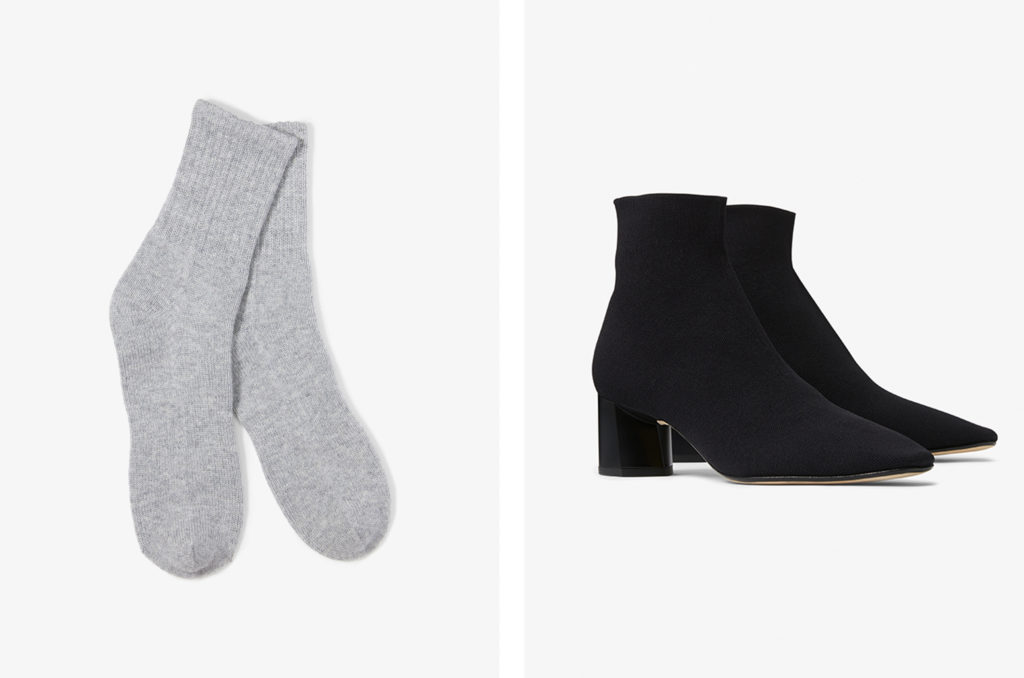
The Cashmere socks and the Zelda boots.
Socks are just as important as shoes when it comes to staying warm. “Having a cozy sock with some breathability will keep dampness from sticking around your feet,” says Brown, “so if you’re going to wear a rainboot it’s best to have something to change into when you arrive because that rubber doesn’t breathe and it can actually make you colder to have moisture trapped inside the sock.”
Your Legs and Your Core
During the frigid, windy winter months in New York City, “I always see people throwing on a puffer coat and thinking they’ll be fine,” says Teich. But while she personally finds that shape unflattering, her objection here is that there are simply more efficient ways to keep warm.
“Wherever you’re walking that day, temperatures might swing between 20 degrees and 50 degrees, and the best approach is layers,” says Teich. On especially chilly days, layering tights underneath pants (we’re a huge fan of Commando) or heat-tech apparel is a good way to keep warm without adding bulk. Her recommendation: “The Lagarde shirt is a great base to start with—it’s machine-washable and breathable.” From there, add a sweater like the Morandi, which you can easily take off if you start to feel hot.
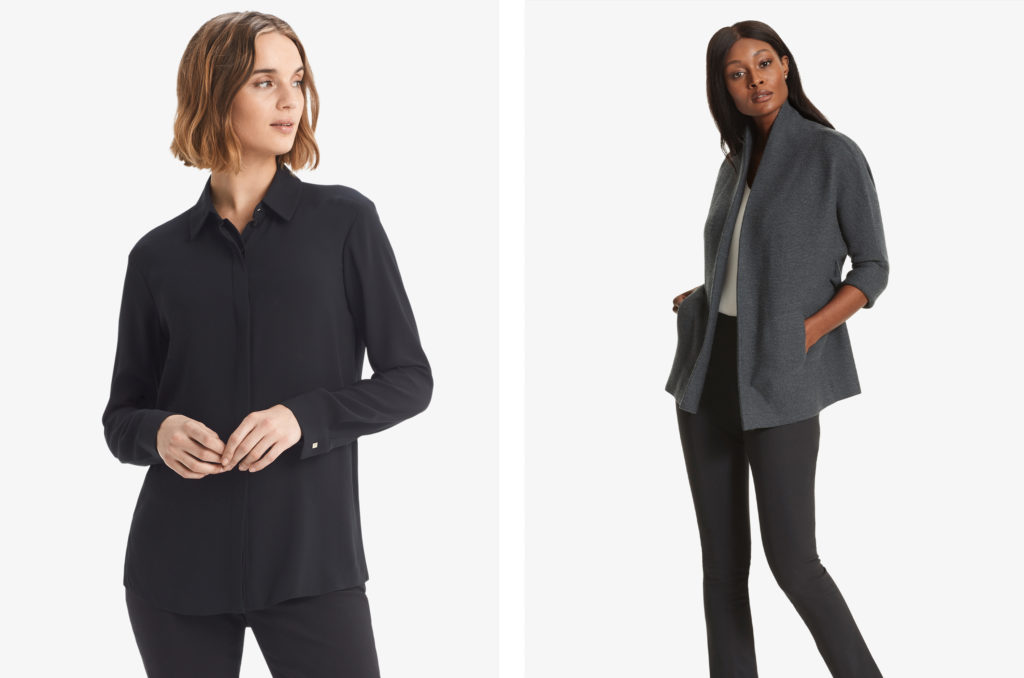
The Lagarde shirt and the Morandi sweater.
It’s important to be mindful of materials. Yes, there are plenty of irresistibly trendy styles on the racks at fast fashion stores. But because they are often made with cheaper materials, they may not actually be up to the challenge of keeping you warm—or they might be made of synthetics that will trap heat and make you sweat. While fabrics closest to your skin should always be the most breathable—think cotton, wool, cashmere, and natural fiber blends, explains Teich—it’s also important to be conscious about fibers as your layers build.
“If you put a polyester shirt underneath a wool blazer that’s lined with another synthetic fabric, you’ll be extremely warm, but you’ll sweat—it’s like being trapped in a sleeping bag,” says Samantha Brown. An example of a better way to go about it: Start with the Winfrey top, add the Hoffman blazer, and then layer a fitted overcoat on top of that.
Your Head and Neck
We lose heat through our heads, explains Brown—which means that area of our bodies can also be considered kind of like a temperature control dial. Wear a hat on your walk to the subway to stay warm; pop it off when you get on the train car to cool down. The same rule applies to scarves.
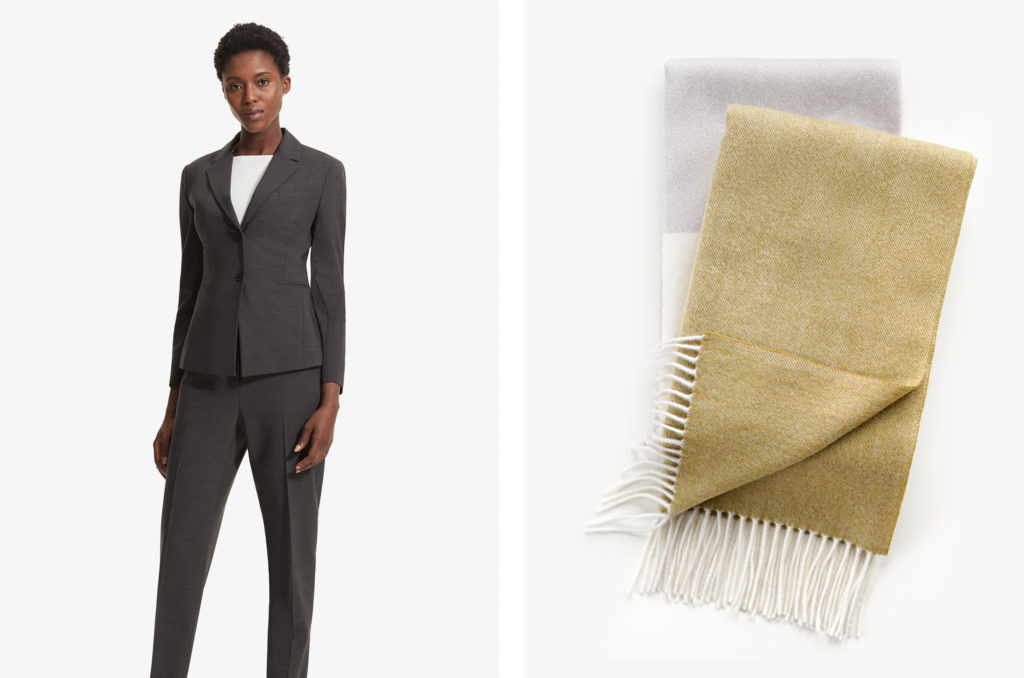
The Hoffman blazer and the Felted scarf.
Both Teich and Brown suggest a cashmere option, noting versatility, elegance, and temperature-regulating qualities. “It’s a great fabric, because it breathes so much—it’s kind of magical, because it adjusts to what you need,” says Teich. Brown agrees: She recommends a big, oversized cashmere scarf to clients because they can wear it to stay comfortable during the commute and then drape it over their shoulders if the office is chilly for a look that’s chic and intentional.
Vests are another fashionable solution for fluctuating temps. “They keep that extra layer of warmth around your torso, and they’re amazing layered under a big jacket or even over a moto jacket or blazer,” says Brown, depending on the style. “Add a stretch pant—something skinny—to keep the warmth close to your body and you’ll be cozy, chic, and put together for work.”
A Final Note: Sweat Happens
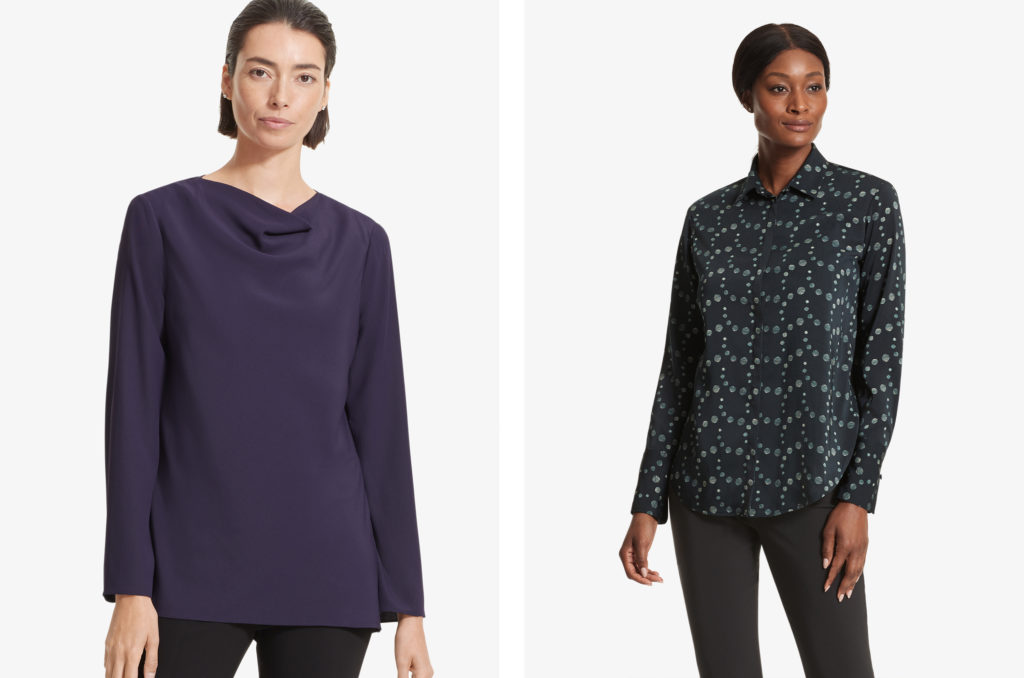
The Ava top and the Blake shirt.
You’re not always going to make it from front door to desk without getting a little dewy. But there are ways to contain the crisis. “Patterns will always camouflage sweat better than solids. Darker colors—like black, navy, and charcoal—are much better at that than lighter, brighter colors,” says Brown. A hack she regularly recommends to clients: underarm shields, which absorb sweat and also minimize stains. Brown also encourages people to look for washable versions of their preferred fabrics, including silks: “That way, if you do sweat, it’s not always a trip to the dry cleaner every time you wear it.” We’ve also got to give it up for Polygiene, an anti-odor finish on many of our silkier items that doesn’t hold smells—meaning you can wear the item multiple times without washing.
One final piece of wisdom? Being chic is important but not more so than being safe or practical. Luckily, with this knowledge (perhaps literally) under your belt, you don’t need to sacrifice either element this winter.







